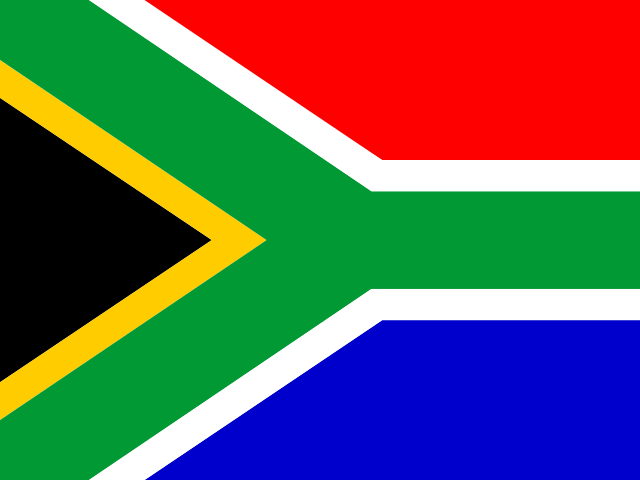
South Africa
*Survey sample primarily comprised of English speakers
Despite the widespread use of social media for news, follower counts and mentions for home-grown news creators in South Africa are lower than in many other countries, with news organisations still playing a significant role. N24, eNCA, and public broadcaster SABC are among those who have adapted their content and style to meet audiences on social platforms. Among individuals, US-based South Africans Elon Musk and comedian Trevor Noah feature prominently along with TikTok star Dylan Page, who spent much of his childhood in the country. International YouTubers and podcasters such as Joe Rogan, Candace Owens, and Tucker Carlson are also popular with our largely English-speaking survey sample. Local politicians are also well represented among mentioned individuals, including the current president, Cyril Ramaphosa, and politicians and activists from the EFF (Economic Freedom Fighters), who are using social media platforms such as X to build support for their message of radical change. Younger podcasters and lifestyle creators focus more on YouTube, Instagram, and TikTok. Here their video-led content combines politics, comedy, and entertainment in accessible ways.
Macgyver ‘MacG’ Mukwevho is the main host of South Africa’s most popular podcast, Podcast and Chill, which includes celebrity gossip, frank discussions about sex, and current affairs and politics, presented in a relatable and authentic tone. But the show has also attracted criticism from politicians and from the media for promoting harmful narratives and for allegedly misogynistic comments.
Another controversial figure is Chris Excel, an infamous online troll and self-proclaimed ‘President of Black Twitter’ (3.3m followers). He is known for mean-spirited comments targeting celebrities, politicians, and ordinary individuals. Man’s Not Barry Roux is a notorious parody account on X that came to prominence during the Oscar Pistorius murder trial, poking fun at the language of defence lawyer Barry Roux. Beyond the trial, the account, which has been suspended and reborn under different names, became famous for investigative threads and often controversial political commentary.
A number of creators have been experimenting with approaches that mix news, politics, music, and comedy. Sizwe Mpofu-Walsh is an Oxford-educated author and podcaster who blends hip-hop with political analysis on The Sizwe Mpofu-Walsh Xperience.
Politically Aweh bills itself as South Africa’s wittiest news show, a weekly YouTube show and podcast from comedian KG Mokgadi and the team. It’s a non-profit that is looking to raise ‘Aweh’ness and build civic participation with the young. But YouTube is also home to a range of serious thinkers. Penuel The Black Pen is a host of The Penuel Show, where he takes an in-depth approach to politics, social issues, fatherhood, and the history of South Africa.
Meanwhile in the news-adjacent space, lifestyle content is hugely popular. Mihlali Ndamase and Anele Mdoda are two well-known influencers and personalities who reach large numbers of people though Instagram, Facebook, YouTube, and X and are also mentioned by audiences in the context of news.
Proportion that regularly pay attention to creators/influencers in social and video networks
39%
(5/24)
Proportion that regularly pay attention to news brands/journalists in social and video networks
38%
(4/24)
Gender balance
14
of the top 15 individuals are men
These lists represent the individuals most mentioned by respondents to our 2025 and 2024 Digital News Report surveys in the context of news and social media and video networks. Respondents who used Facebook, YouTube, X, Instagram, Snapchat or TikTok for news were asked where they paid most attention – including options for traditional news media/journalists, digital-first news outlets not associated with traditional media, creators/personalities who mostly focus on the news, creators/personalities who occasionally focus on the news. For each type, we asked respondents to name up to three examples of who they paid attention to. We then counted the individuals mostly using a tool called OpenRefine to help us use a semi-automated approach to clean the data (e.g. resolve misspellings or alternative names, remove duplicates etc.). In parallel, we also used ChatGPT5 to process and recode the original data, and to identify the most mentioned individuals to give us a way of comparing results. Further details on the tools we used and on small differences in methodology between 2024 and 2025 are provided in our methodology section.
Why did you use open fields rather than closed lists to collect the data?
We used open text response boxes, first, because in many countries the most popular news creators and influencers have not yet been identified by previous research. Second, because it would likely not be possible to fully capture the broad and fragmented nature of this ecosystem using a fixed listed of response options. And third, because we wanted to adopt an audience-centric approach whereby respondents could enter names that they considered news sources to them, even if they did not meet accepted standards or definitions within academia or the journalistic profession. This means that many of the names we list here would perhaps have been excluded under a more top-down approach.
How definitive is the order of the named individuals in each country?
In some cases, especially near the bottom the list, differences in the number of mentions for individuals are very small. Given our survey methodology, and the associated margin of error, the precise rank order should be read as indicative rather than definitive. Many other individuals were mentioned by respondents in the context of news, even if they do not make the top 15 using our approach. The lists should therefore be seen as indicative of some of the top news individuals in each country.
Why are some popular individuals with high follower counts lower down the list than individuals with high follower counts?
There are a number of possible reasons for this. First, some popular creators such as musicians and comedians are known more for entertainment than for news and their follower counts are often higher as a result. This means that even if they do occasionally talk about news related issues, not all of their followers will be aware of it. Second, some individuals working for traditional media may have relatively low personal followings but are widely distributed via social accounts of news brands. Third, there is a margin of error in surveys such as this (see previous answer) that needs to be borne in mind.
Did you exclude any individuals or other entries as part of the process?
Our lists are inclusive in terms of being faithful to the individual names mentioned by respondents. We removed just a handful of actors, sports stars, and celebrities if we were sure they did not post on any news-related issues. In most cases this did not affect the top 15 names that are published in this report for each country.
Many creators operate as part of collectives or use pseudonyms. How did you deal with these categorisation issues?
In terms of creator collectives or social-first brands, such as the Daily Wire (US) or TLDR News (UK) we followed the lead of our respondents. Where audiences have identified them as individuals, we have tended to categorise these as creators rather than news brands, but where they have mentioned a brand, we included them in our list of news brands. Where it was clear, however, that the brand is the work of one individual (e.g. Es.decirdiario/Sheila Hernández in Spain) we categorised them as an individual and made the connection clear in the description. Many creators use pseudonyms and, in these cases, we combined mentions of these with the real names. Again, we tried to make the connection clear in the description.
How did you deal with politicians and the overlap between politicians and political commentary?
Politicians and businesspeople are also frequently mentioned by survey respondents in the context of news sources on social media, and often have significant followings (e.g. on X, Donald Trump has 109m, Narendra Modi 109m, and Elon Musk 225m). Many politicians are also content creators and commentators who shape public debates. Some content creators have become politicians, and vice versa. We chose to include politicians if they were named by respondents in the context of news, but we have also shaded serving (or recently serving) politicians in grey to make clear the different relationship they often have with news consumers.

